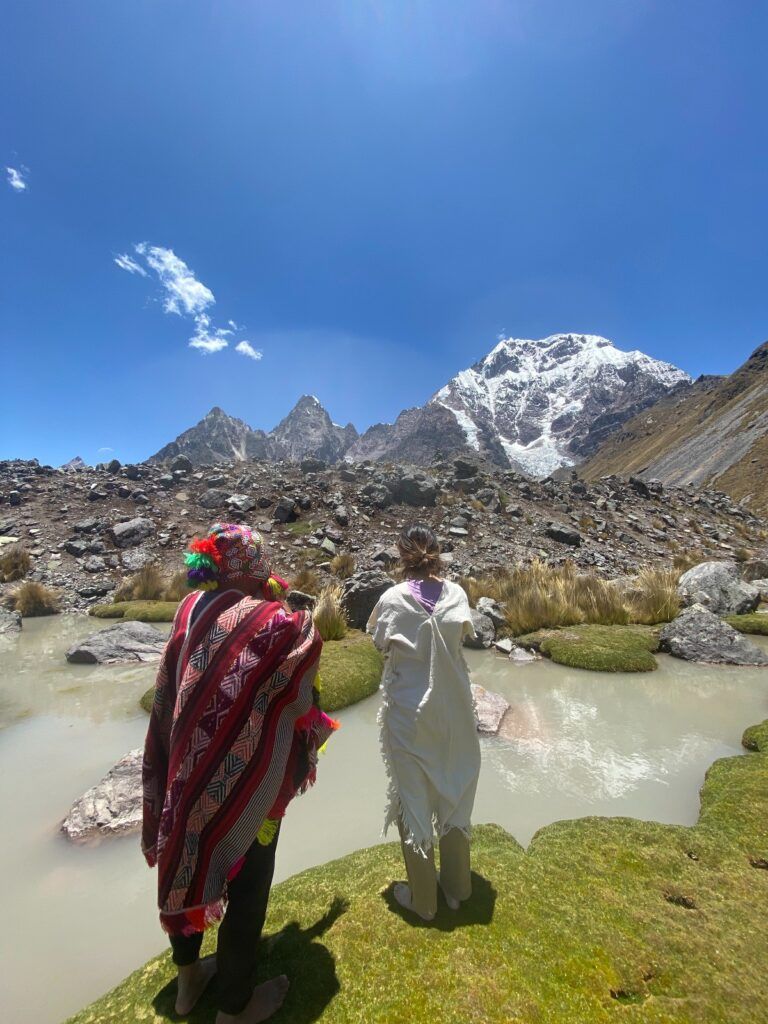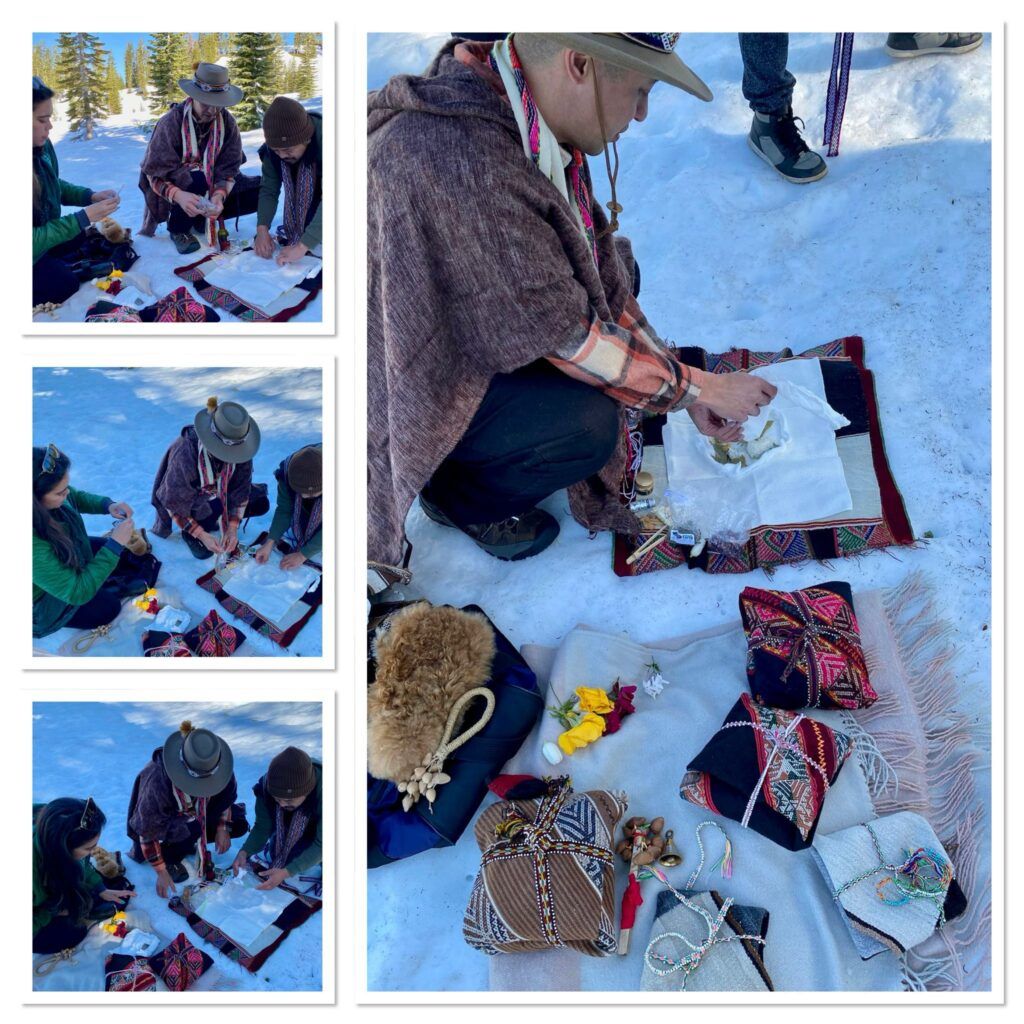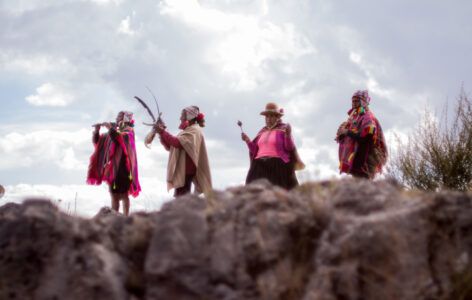In the high Andes, mountains are not scenery. They are sacred beings, ancestors, and guardians. Known as Apus, these majestic peaks are not passive forms of nature but living, breathing temples. They hold memory, identity, and protection for the communities that live in their embrace.
To the Andean people, an Apu is not simply a mountain—it is a cosmic presence that participates in the lives of humans and spirits alike.

Who Are the Apus?
The word Apu in Quechua translates loosely as “lord” or “spirit,” but its meaning is much more layered. Apus are often the highest mountains surrounding a village or region. Each community recognizes specific Apus as their protectors and benefactors.

Some of the most revered Apus in Peru include:
- Apu Ausangate – The spiritual guardian of Cusco and a master of initiation.
- Apu Salkantay – Associated with fierce transformation and deep medicine.
- Apu Veronica (Wakay Willka) – A feminine mountain spirit of clarity and mystery.
But there are also small Apus—hills, rocks, even waterfalls—that hold power and awareness. In Andean spirituality, size does not determine sacredness.
Mountains as Conscious Beings
Western thought often reduces mountains to geological formations. But in the Andean cosmovision, mountains are alive, imbued with kawsay (living energy), and capable of communication. One does not “climb” a sacred mountain without first making an offering, asking permission, and establishing ayni, or sacred reciprocity.

Pilgrimages to Apus—such as the great Qoyllur Rit’i near Ausangate—are not about reaching a peak. They are acts of devotion and dialogue, where humans and spirits exchange offerings, prayers, and energy.
Mountains as Ancestors and Mirrors
Many Apus are considered ancestors, guardians of lineage and wisdom. They are believed to hold the spirits of the dead, protect communities, and influence weather, fertility, and health. People often consult the Apus through despacho ceremonies, coca leaf readings, or direct communion in dreams and visions.

But Apus also act as mirrors. In their stillness, they reflect the inner mountains we must climb—our fears, desires, transformations. Standing before an Apu, a seeker is reminded of their smallness and sacredness, all at once.
Living Temples of the Earth
Temples do not have to be built. They can be found. For the Andean people, an Apu is a living temple—a place where the veil between worlds is thin, where Hanaq Pacha (upper world) speaks through thunder, snow, and silence.

The Apus carry geological, spiritual, and energetic memory. Some traditions hold that each Apu corresponds with a specific animal guide, element, or star system. These connections reveal the Andean understanding of a multidimensional universe, where all planes—earthly and celestial—are woven together.
Reconnecting with the Mountains
In a time of ecological crisis and spiritual disconnection, the Apus offer more than myth. They offer a way back to relationship. Honoring an Apu is not about romanticizing Indigenous beliefs—it is about remembering that we are not above the land, but within it.
Bibliography
- Allen, C. J. (1988). The Hold Life Has: Coca and Cultural Identity in an Andean Community. Smithsonian Institution Press.
- Apffel-Marglin, F. (2012). Subversive Spiritualities: How Rituals Enact the World. Oxford University Press.
- Quispe Singona, P. F. (2021). Andean Wisdom Teachings [Lecture Series].
- Nuñez del Prado, J. (2013). The Andean Cosmovision. Four Winds Society.
- Dean, C. (2010). Inka Bodies and the Body of Christ: Corpus Christi in Colonial Cuzco, Peru. Duke University Press.


